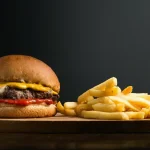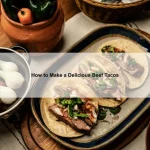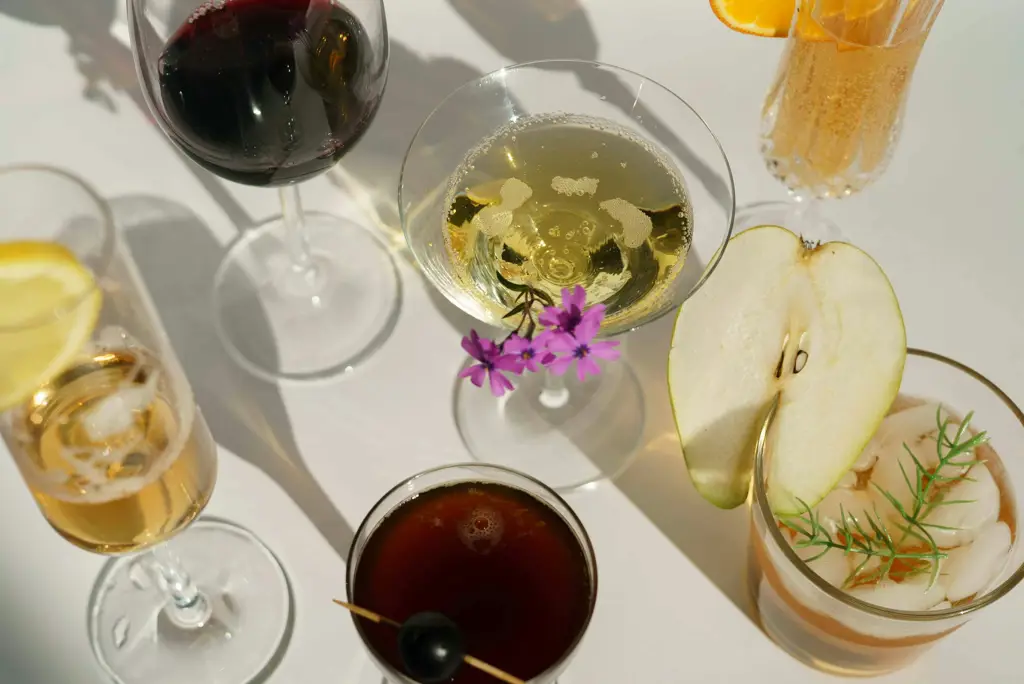The delicate sweetness and satisfying sear of perfectly grilled scallops are a culinary experience appreciated across the globe. While the precise origins of grilling scallops are difficult to pinpoint, their consumption dates back centuries. Archaeological evidence suggests that scallops were a dietary staple for coastal communities as far back as the Stone Age, with various methods of preparation evolving alongside cultural advancements. Early methods likely involved simple roasting over an open fire, a precursor to the grilling techniques we enjoy today.
Historically, scallops held significant cultural importance in various societies. In some cultures, they were considered a luxury food, reserved for special occasions or the elite. The large, meaty adductor muscle of the scallop, the part we primarily consume, was often a symbol of wealth and status. In others, they were a vital part of the everyday diet, providing a crucial source of protein and sustenance for coastal populations. The shells themselves also found use, appearing in decorative arts, jewelry, and even as currency in some regions.
Today, scallops remain a prized seafood ingredient, with global annual production exceeding 1 million metric tons, according to the FAO (Food and Agriculture Organization of the United Nations). This high demand necessitates sustainable fishing practices, which are increasingly important for maintaining healthy ocean ecosystems. Interestingly, scallops are filter feeders, playing a crucial role in maintaining water clarity. Their distinctive fan-shaped shells and vibrant colors have also inspired artists and designers for centuries, further solidifying their cultural significance beyond the plate. This recipe focuses on celebrating the natural sweetness of the scallop, showcasing its versatility and exquisite taste through simple yet effective grilling techniques.
Ingredients and Measurements
This recipe yields approximately 4 servings of perfectly grilled scallops. The success of this dish hinges on using high-quality, fresh scallops. Look for dry-packed scallops, which means they haven’t been treated with a solution to add weight. These will sear better and have a sweeter flavor.
Scallops: 1 pound (450g) large sea scallops. Ensure they are patted completely dry before grilling. Excess moisture will prevent proper browning and lead to steaming instead of searing. If your scallops are uneven in size, try to select those of similar dimensions for even cooking. Smaller scallops will cook faster than larger ones.
Olive Oil: 2 tablespoons (30ml) extra virgin olive oil. Use a high-quality olive oil with a robust flavor that can stand up to the delicate taste of the scallops. Avoid using oils with low smoke points, as these can impart an unpleasant flavor and potentially burn at high heat.
Lemon Juice: 2 tablespoons (30ml) fresh lemon juice. Freshly squeezed lemon juice is crucial here. Bottled lemon juice often lacks the vibrant acidity and fresh flavor needed to complement the scallops. Reserve a small amount of lemon juice for a final squeeze just before serving to add a burst of freshness.
Garlic: 2 cloves garlic, minced. Freshly minced garlic adds a pungent aroma and flavor that perfectly pairs with scallops. Avoid using pre-minced garlic from a jar, as it often lacks the intensity of fresh garlic. Mince the garlic as finely as possible to prevent burning during the grilling process.
Butter: 2 tablespoons (30g) unsalted butter. Unsalted butter allows you to control the saltiness of the dish. Use high-quality butter for the best flavor. The butter will be used for basting the scallops during grilling, adding richness and depth of flavor.
Salt and Pepper: To taste. Season generously with freshly ground black pepper and sea salt. Seasoning the scallops just before grilling will help them retain their moisture and flavor. Start with a light seasoning and adjust as needed.
Optional Herbs: 1 tablespoon chopped fresh parsley or chives. Fresh herbs add a vibrant touch of color and freshness. Add these towards the end of the cooking process to prevent them from burning. Experiment with other herbs such as thyme or rosemary for a different flavor profile.
Equipment List
Grilling perfectly seared scallops requires the right tools to ensure even cooking and prevent sticking. This equipment list details everything you’ll need for optimal results, from preparation to serving.
First and foremost, you’ll need a high-quality grill. This could be a gas grill, charcoal grill, or even a well-seasoned cast iron skillet on your stovetop. For best results, aim for a grill with consistent heat distribution, avoiding hot spots that could overcook your scallops. If using a gas grill, ensure it’s clean and preheated to medium-high heat (approximately 400-450°F or 200-230°C). For a charcoal grill, achieve a bed of hot coals with a consistent heat zone.
Next, you’ll need appropriate grilling tools. A pair of long-handled tongs (at least 12 inches) are essential for safely maneuvering the delicate scallops on the hot grill grates. These tongs will allow you to flip the scallops without burning your hands. A spatula, preferably thin and flexible, is also helpful for gently sliding the scallops onto the grill and checking for doneness.
Measuring tools are crucial for accuracy in preparation. You’ll need a kitchen scale to weigh the scallops accurately, ensuring even cooking times. A set of measuring spoons and cups is necessary for measuring any additional ingredients in the marinade or seasoning blend. A meat thermometer is highly recommended, particularly for those new to grilling scallops. It allows you to check the internal temperature of the scallops to ensure they reach a safe and delicious 145°F (63°C) without overcooking.
Preparation requires a few more essential tools. A large bowl is needed for marinating the scallops, if desired. Paper towels are crucial for patting the scallops dry before grilling, ensuring a good sear. Small plates or shallow dishes can be used to arrange the seasoned scallops before grilling. Finally, serving your beautifully grilled scallops requires a suitable platter or plates. Consider using something that complements the dish’s elegance.
Optional but recommended: A grill brush for cleaning the grates before grilling, a basting brush for applying marinade or butter during cooking, and a grill cover to protect your grill when not in use. Investing in quality equipment will significantly enhance your grilling experience and the final outcome of your perfectly grilled scallops.
Preparation of Scallops
Proper preparation is key to achieving perfectly grilled scallops. Start with 1 pound of fresh, dry-packed sea scallops. Avoid pre-soaked scallops, as they’ll be watery and won’t sear properly. Dry-packed scallops will have a slightly more intense flavor and better texture.
Once you have your scallops, gently rinse them under cold running water. Avoid scrubbing them aggressively, as this can damage their delicate texture. Pat them thoroughly dry with paper towels. This step is crucial; excess moisture will prevent proper browning and lead to steaming instead of searing. Make sure to dry them completely on all sides.
Now, let’s address the size. For even cooking, aim for scallops that are relatively uniform in size. If you have a mix of large and small scallops, it’s best to separate them and cook them in batches. This ensures that the smaller ones don’t overcook before the larger ones are finished. Cooking in batches guarantees perfectly cooked scallops every time.
Next, consider seasoning. Keep it simple but effective. For 1 pound of scallops, I recommend using about 1 teaspoon of kosher salt and ½ teaspoon of freshly ground black pepper. Gently toss the scallops with the salt and pepper, ensuring they are evenly coated. Avoid over-seasoning; the delicate flavor of the scallops should shine through. You can also add other seasonings like garlic powder or paprika, but start with small amounts to avoid overpowering the taste.
Finally, before grilling, consider a quick optional step: a light sear in a hot pan with a little oil. This will create a beautiful crust and lock in the juices. Heat about 1 tablespoon of olive oil in a cast iron skillet over medium-high heat. Sear the scallops for about 1-2 minutes per side, until lightly browned. This step is optional but highly recommended for maximizing flavor and texture. This pre-sear is optional, but it significantly improves the final result. After searing, move straight to the grill.
With these steps, your scallops will be perfectly prepared and ready for the grill! Remember, consistency in size, thorough drying, and careful seasoning are the hallmarks of perfectly prepared scallops.
Marinade (if using)
While scallops don’t require a marinade to be delicious, a quick soak can enhance their delicate flavor and add a touch of brightness. Over-marinating scallops, however, is strongly discouraged as it can result in tough, rubbery texture. Aim for a maximum marinating time of 15-20 minutes, and never longer than 30 minutes.
This recipe offers a simple yet effective citrus marinade. For approximately 1 pound of sea scallops (about 12-16 large scallops), you will need:
- 2 tablespoons fresh lemon juice
- 1 tablespoon fresh lime juice
- 1 tablespoon extra virgin olive oil
- 1 teaspoon finely minced garlic
- 1/2 teaspoon finely grated ginger
- 1/4 teaspoon salt
- 1/8 teaspoon freshly ground black pepper
- (Optional) 1/4 teaspoon red pepper flakes for a touch of heat
Preparation is key for a successful marinade. In a small bowl, whisk together the lemon juice, lime juice, olive oil, garlic, ginger, salt, pepper, and red pepper flakes (if using) until well combined. Ensure all the ingredients are thoroughly mixed to create an even flavor distribution.
Gently add the scallops to the marinade, ensuring they are evenly coated. Avoid overcrowding the bowl; if necessary, marinate in two batches to maintain proper contact with the marinade. Once coated, cover the bowl with plastic wrap and refrigerate for 15-20 minutes. Do not exceed 30 minutes.
Before grilling, remove the scallops from the marinade and pat them dry with paper towels. This step is crucial for achieving a beautiful sear on the grill. Excess moisture will prevent proper browning and result in steaming instead of grilling.
Feel free to experiment with other marinade ingredients! Consider adding herbs like fresh thyme or oregano, or a splash of white wine or tequila for a more complex flavor profile. Remember to adjust the marinating time accordingly, always keeping it within the recommended timeframe to prevent over-marinating.
Important Note: If using a marinade that contains raw garlic or other potentially hazardous ingredients, do not reuse the leftover marinade after marinating the scallops.
Grilling Techniques for Perfectly Grilled Scallops
Grilling scallops requires a delicate touch to achieve that perfect sear and tender interior. Overcooking is the biggest enemy, transforming succulent scallops into rubbery disappointments. This section will guide you through the process, ensuring your scallops are cooked to perfection.
Preparation is key. Before you even think about firing up the grill, ensure your scallops are thoroughly patted dry with paper towels. Excess moisture will prevent a proper sear, resulting in steamed, not grilled, scallops. Season generously with salt and freshly ground black pepper. You can also add a touch of your favorite herbs or spices, such as paprika, garlic powder, or Old Bay seasoning, but keep it simple to let the natural sweetness of the scallops shine through.
Preheat your grill to medium-high heat (approximately 400-450°F). You should be able to hold your hand about 6 inches above the grates for 4-5 seconds before it becomes uncomfortable. If using a gas grill, preheat for at least 10-15 minutes. For charcoal grills, ensure the coals are glowing red and covered with a thin layer of ash.
Oil the grates generously. Use a high-heat oil with a high smoke point, such as canola or grapeseed oil. This will prevent sticking and ensure a beautiful sear. Use a clean paper towel or a grill brush to apply the oil evenly across the cooking surface.
Arrange the scallops in a single layer on the preheated grill, ensuring they aren’t overcrowded. Overcrowding will lower the grill temperature and lead to steaming instead of grilling. For optimal results, aim for about 4-6 large scallops per 100 square inches of grill space.
Grill for 2-3 minutes per side, or until the scallops are golden brown and opaque throughout. Do not move them around unnecessarily during cooking. Use tongs to gently flip them once. The cooking time will depend on the size and thickness of your scallops; larger scallops will require slightly longer cooking time. Avoid pressing down on the scallops while grilling, as this will squeeze out their juices.
Check for doneness by gently pressing on a scallop with a spatula. It should feel firm but not hard. If it feels soft or mushy, it’s undercooked. If it feels tough or rubbery, it’s overcooked.
Remove the scallops from the grill immediately once they are cooked and transfer them to a serving platter. Serve immediately to enjoy the best flavor and texture. Do not overcook! A slightly undercooked scallop is far preferable to an overcooked one.
Optional: Add a finishing touch. For an extra burst of flavor, consider a quick drizzle of lemon juice or a sprinkle of fresh herbs just before serving.
Checking for Doneness
Perfectly grilled scallops are a delicate balance between tender and slightly firm, with a beautiful sear. Overcooking results in rubbery, tough scallops, while undercooking leaves them translucent and raw in the center. Mastering the art of checking for doneness is crucial to achieving that perfect bite.
The most reliable method for determining doneness is to use a combination of visual cues and the feel of the scallop. Avoid using a meat thermometer; piercing the delicate flesh will release its juices and lead to a less succulent result. Instead, focus on these key indicators:
Visual Inspection: Look for an opaque, pearly white color throughout the scallop. A raw scallop will be translucent and glossy. As it cooks, the edges will begin to curl slightly and the surface will develop a rich, golden-brown sear. Aim for about 80-90% opaque; a tiny bit of translucence in the very center is acceptable, as residual heat will continue the cooking process even after you remove the scallops from the grill.
Texture Test: Gently press the center of a cooked scallop with your fingertip. It should feel firm but not hard. Avoid pressing too hard, as this can damage the delicate flesh. A properly cooked scallop will offer a slight resistance, indicating it’s cooked through but still retains its moisture. If it feels mushy or overly soft, it’s undercooked. If it feels extremely firm and almost rubbery, it’s overcooked.
Timing is Crucial: While visual and textural cues are paramount, timing provides a helpful guideline. Large sea scallops (approximately 1-1 1/2 inches thick) will typically take 2-3 minutes per side over medium-high heat. Smaller scallops will require less time, perhaps only 1-2 minutes per side. Always adjust cooking time based on the size and thickness of your scallops. Start checking for doneness around the minimum cooking time, and then check frequently to avoid overcooking.
Resting is Key: Once cooked, immediately remove the scallops from the grill and let them rest for at least 30 seconds to a minute. This allows the juices to redistribute throughout the scallop, resulting in a more tender and flavorful final product. Never overcrowd the grill, as this will lower the temperature and lead to uneven cooking. Work in batches if necessary to ensure each scallop receives sufficient heat contact.
By carefully observing the visual cues, gently testing the texture, and timing the cooking process accurately, you will consistently achieve perfectly grilled scallops – tender, juicy, and beautifully seared.
Recommendations for Perfectly Grilled Scallops
For the most exquisite dining experience, serve your perfectly grilled scallops immediately after cooking. Their delicate texture and sweet flavor are best enjoyed while still hot. Consider plating them atop a bed of creamy risotto, a vibrant salad, or a simple bed of wilted spinach. A drizzle of lemon-butter sauce or a sprinkle of fresh herbs, such as chives or parsley, adds a delightful finishing touch.
Leftover scallops should be stored properly to maintain their quality. Allow them to cool completely before transferring them to an airtight container. Refrigerate them promptly and consume within 1-2 days. Avoid refreezing previously frozen scallops. Reheating can negatively impact their texture and flavor; it is best to enjoy them fresh.
To complement the sweet and subtly briny taste of grilled scallops, consider serving them with dishes that offer contrasting flavors and textures. A crisp white wine, such as Sauvignon Blanc or Pinot Grigio, pairs beautifully. Roasted asparagus, grilled vegetables, or a light pasta salad make excellent side dishes. For a more substantial meal, pair them with a quinoa or brown rice pilaf.
Approximate Nutritional Information (per serving, based on a 4-scallop serving): Calories: 150-200 (depending on size and added butter/oil), Protein: 20-25g, Fat: 8-12g (mostly unsaturated), Carbohydrates: 1-2g. Note: This is an estimate and can vary depending on scallop size, cooking method, and added ingredients. For precise nutritional information, use a nutrition calculator based on your specific recipe and ingredients.
Important Note: Always ensure your scallops are fresh and handled properly to prevent foodborne illness. Look for scallops that are firm, moist, and have a pleasant ocean aroma. If they smell fishy or have a slimy texture, discard them. Enjoy your delicious and healthy meal!





